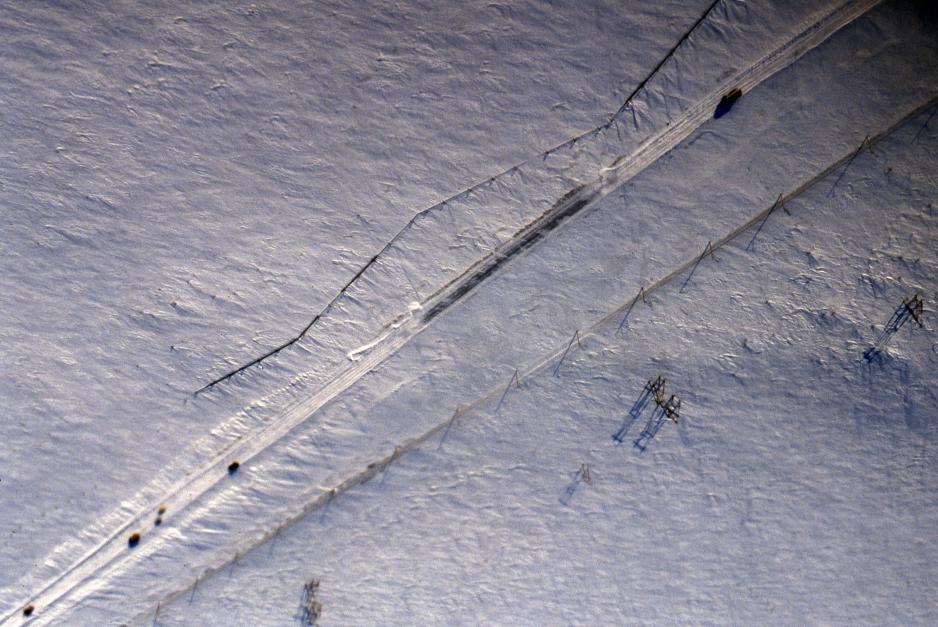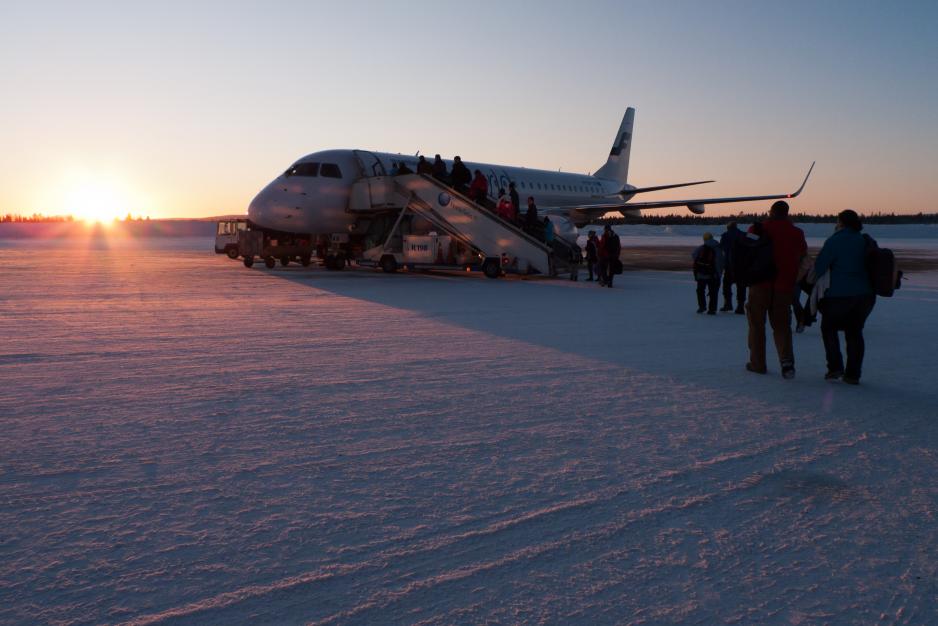Waiting for the train, waiting for development

Plans for infrastructure development create expectations and have a big impact on people’s lives, even if they are not realized.
This is one of the conclusions reached at a recent workshop on infrastructure developments in the North.
The local population is often disappointed about the actual results, even more so as a reliable and efficient infrastructure is considered crucial on the way to economic prosperity.
Expansion plans are often postponed, which creates an “atmosphere of waiting and expectation”.
The effect of expectations: waiting for Godot?
Sigrid Schiesser of the University of Vienna, Austria, explains: "The expectations are fueled by unrealistic media reports and enthusiastic political actors” and bear upon the aspirations of individuals and the composition of human collectives, such as socially and culturally determined hierarchies.
The village of Nizhniy Bestyakh in Siberia is a case in point. The long-promised and long-awaited passenger connection to the railroad network has a great impact on the village, even though it is unclear when the plans will be realized.
The effects include changes in the mobility of the residents of the area, including work-related commutes or permanent migrations.
Schiesser’s research is one of the sub-projects of Configurations of Remoteness (CoRe), a research program on infrastructure in the Russian North, which was recently awarded a research grant by the Austrian Science Fund.
Innovative research
The study concentrates on the eastern Siberian regions around the Baykal-Amur Mainline (BAM) and the Amur-Yakutsk Mainline (AYaM) railroad systems. Its research design is innovative in that it aims at combining methods from different disciplines, such as geography and anthropology, by integrating GIS mapping with ethnographic methods.
The researchers expect that the physical remoteness, harsh climate, low population density and paucity of tracks of the area will prove to have a great impact on transportation networks and, in turn, human lives.
The overall CoRe project, which is led by Prof. Peter Schweitzer, is divided into several sub-projects conducted by Austrian and Russian scientists Christoph Fink, Olga Povoroznyuk, Gertrude Saxinger, and Sigrid Schiesser.

As in other Arctic regions, in Siberia resource extraction is a key driver to infrastructure development. The BAM infrastructure was for example originally designed to cater to the extractive industries, but has since then evolved as a driver of social and environmental change. The railroad line has had repercussions on a variety of aspects of people’s lives. It has altered the landscape, how people use the land, their migration patterns, urbanization and sedentarization processes.
What is more, it enables an influx of workers from other parts of Russia or countries of the former Soviet Union.
The BAM also reshapes patterns of inclusion and exclusion, for instance by acting as a gatekeeper to extractive industry projects. Olga Povoroznyuk talks about infrastructural violence, which hinders the access of certain population groups, often minorities, to infrastructure and resources and (re)produces social discrimination.
In the case of the BAM railroad, “examples of infrastructural violence are the indigenous marginalization during the BAM construction and the recent cancellation of daytime passenger trains”, illustrates Povoroznyuk.
Making friends while waiting for the plane
Otto Habeck of the University of Hamburg takes on the aspect of “waiting”, which is closely connected to the available infrastructure.
He explains: “In some regions, the travel time is undefined. You simply don’t know when you’ll arrive.”
The notion of “undefined travel time” and the ensuing waiting are well-known in the Arctic, where weather conditions determine transportation opportunities, often within a restricted time window. In particular, waiting for a specific connection can influence how time is perceived: “Sometimes you are waiting for weeks at the reindeer corral for the plane to pick you up and then there is a rush and you need to be ready to go within minutes”, says Habeck. This is very different from previous modes of transport, such as using reindeer.
Waiting also unites people with the same goal and creates social bonds. However, a reliable infrastructure reduces waiting times and the need to talk to one’s travel mates. These bonds are therefore altered or not created at all, resulting in a shift in social relations.

Not enough research on the impact of climate change
Despite its great impact on infrastructure, which is generally acknowledged, climate change is not given enough attention in infrastructure research. Skip Walker, Director of the Alaska Geobotany Center (UAF), reports the results of the initiative RATIC:
- The primary conclusion from the report is that the cumulative effects of infrastructure and climate change are not adequately addressed by any of the IASC (International Arctic Science Committee) working groups at the moment. Nor are they prominently addressed in national-level Arctic science plans.
RATIC, which stands for Rapid Arctic Transitions due to Infrastructure and Climate Change, was supported by IASC and realized by members of the IASC working groups.
More research is essential to comprehensively assess the impact of climate change on infrastructure – and vice versa - and the repercussions on the regional development. In particular, the indirect effects of infrastructure exceed the direct effects and reach beyond the Arctic.
For the future, it would be desirable to involve the Association of Polar Early Career Scientists (APECS) to provide new input for research plans.
Infrastructure networks are crucial in various areas of society
Roads, airports and other transportation infrastructures improve the contact and communication with other regions, investors and companies. Housing infrastructure has crucial impacts on the health and well-being of the local population. And search and rescue (SAR) operations rely on quick and reliable transportation to save lives.
In spite of being viewed as one of the main prerequisites for economic growth, the lack of infrastructure in the High North is apparent. In addition to the problems inherent in northern environments, the effects of climate change, such as permafrost thaw and extreme weather events, modify the requirements placed on infrastructure and make infrastructure development even more difficult.
The CoRe workshop had a look at how potential and actual infrastructure developments affect people’s lives in the North and highlighted which factors are crucial to meet the needs.
The studies presented at the workshop show that even the prospects of infrastructure development have profound and very diverse impacts.
They should be examined in more detail and also taken into account when devising a comprehensive plan for the development of Arctic regions.
Anthropology and other disciplines traditionally not involved in the research on infrastructure development can contribute to a better understanding of the effects of different infrastructures and thus improve decision-making and planning on a local, regional or even global level.
This article is the first of a series exploring the outcomes of the workshop.
In the next article, we will take a closer look at the influence of climate change on infrastructure development and focus on road construction, search and rescue, and housing infrastructure in the Arctic.
